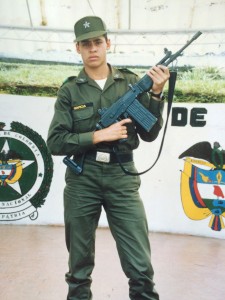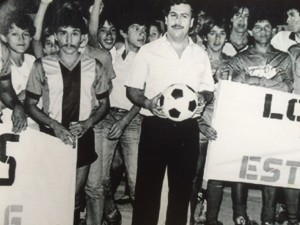Asking the Right Questions
The Pablo Escobar Tour in Medellin, Colombia
Pablo Escobar industrialised the cocaine business and put the city of Medellin in Colombia on the map, for all the wrong reasons. However, once one of the world’s most dangerous cities, it was named “Innovative City of the Year” in 2013, in a competition organised by the Urban Land Institute and sponsored by City and the Wall Street Journal. The city has moved on from the violence of the Pablo Escobar years, a past it is keen to leave behind, as are most Colombians. For them, talking about Pablo Escobar and Colombia in the one breath is cliché.
Still, Pablo Escobar’s place in history in a fascinating one, the scale of the narcotics empire he built, the wealth he amassed, the hero status he enjoyed among the poor in Medellin he helped (their ‘Robin Hood’), but most of all the carnage he bestowed upon Colombians as society all but broke down in Colombia. So while many Colombians would like to forget him, this history naturally continues to attract attention. 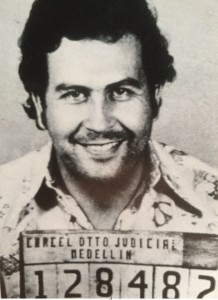
So on my recent visit to Medellin, as part of my trip to Colombia (which was not inspired by watching Narcos) I had to take a Pablo Escobar tour, to hear the on the ground story directly. It may be over twenty years since Escobar was killed but it is still fresh in Medellin. As well, what better way to get a real sense of where the city has come from?
My friend Steve and I took a private tour with Carlos, an ex-cop trained by the DEA, who worked at the height of Escobar’s reign. ‘This was a time when 5-10 cops were being killed every day by Escobar’s hired assassins, the “sicarios”. Present the badges of your victims and Escobar paid up’, Carlos recounted. Only two members of his graduating class, including himself, actually survived.
Carlos described surviving numerous attempts on his life, and told of how he used to sleep with a gun under his pillow. He suffered nightmares, telling us of he would wake startled and on edge, thinking that Escobar’s hired assassins were breaking into his house. Of course, it is impossible to know the extent of any embellishment in his stories, but Carlos seemed to be genuine. He later told of how had to leave the force in 2000 after formal death threats against him and his family. He moved his family to Rhode Island for nine years, until it was safe to return, ‘I worked illegally in the US but I always paid my taxes’.
Our first stop was the Monaco building, the fortress where Pablo kept his family. Bombed by the Cali cartel in 1988, Escobar’s daughter lost her hearing in one ear. The unu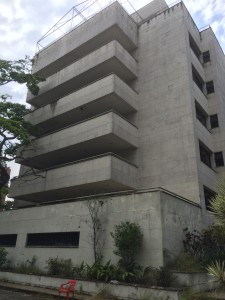 sed building is now under the supervision of the police force. On the day we were there the “Major” happened to be there and after hearing that Carlos was once one of them we were given permission to go into the building. This was a lucky break, and the excitement expressed by Carlos on getting to bring us in suggested it was a rare treat for tourists to actually get inside.
sed building is now under the supervision of the police force. On the day we were there the “Major” happened to be there and after hearing that Carlos was once one of them we were given permission to go into the building. This was a lucky break, and the excitement expressed by Carlos on getting to bring us in suggested it was a rare treat for tourists to actually get inside.
Walking through the building was eery, the damage from the bomb and the looting that followed Escobar’s death have just left a shell standing. Still, as Carlos walked us from floor to floor, room to room, we learned of how Escobar killed and tortured in the basement but played loving family upstairs, a true psychopath. The police are convinced the place is haunted.
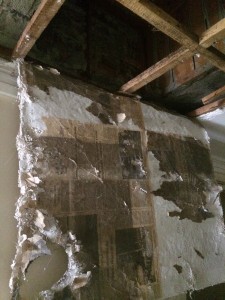 Half broken ceilings showed old newspapers, the method by which Escobar used to store cash in the building. The bedroom sized safe was not big enough for the wealth that Escobar was amassing as the kingpin of the world’s cocaine trade. ‘At the peak he was earning an estimated $6 million USD a day. He was named 7th on the Forbes world’s rich list’, according to Carlos. The Americans got most of the cash he told us, but there is much more that is probably yet to be found, buried in the ground. The Monica building was ransacked after Pablo was killed, with nothing left by the time Carlos got inside a year later in search of treasure.
Half broken ceilings showed old newspapers, the method by which Escobar used to store cash in the building. The bedroom sized safe was not big enough for the wealth that Escobar was amassing as the kingpin of the world’s cocaine trade. ‘At the peak he was earning an estimated $6 million USD a day. He was named 7th on the Forbes world’s rich list’, according to Carlos. The Americans got most of the cash he told us, but there is much more that is probably yet to be found, buried in the ground. The Monica building was ransacked after Pablo was killed, with nothing left by the time Carlos got inside a year later in search of treasure.
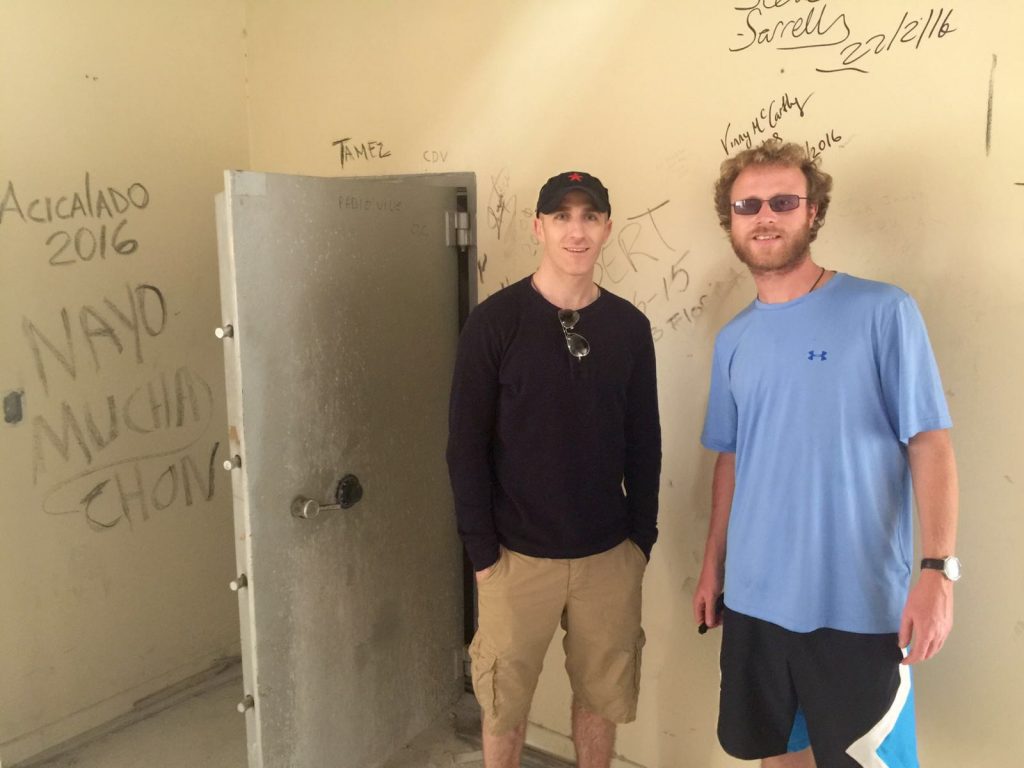
Carlos then brought us to the grave of Pablo and his family, overlooking Medellin. The grave, which appeared to standout compared to others, was adorned with flowers, as many still see Escobar as a Robin Hood. He took many people out of poverty, including the building of a whole neighbourhood. ‘Jesus, the Virgin Mary, and Pablo Escobar!’ Or for some he was their main idol, according to Carlos.
Along the way, Carlos shared stories of Escobar including the murder of two judges. The first, a dirty judge, summoned by Escobar, was killed. Before he left he had warned a friend, another judge, of his trip, ‘if I don’t return Escobar has killed me’. Having not heard from his friend, contact was made to Escobar. ‘Your friend is fine, come and see me and we will talk’. Fearing Escobar he also submitted to the request. After been treated to caviar and five star hospitality, the judge asked ‘where is my friend?’. Escobar replied, ‘I hope you enjoyed your meal, your friend? He is inside you!’. Like his friend, the second judge was then murdered.
Carlos also brought us to a small bar on the top of a hill where Escobar used to go, the same seat every time. The locals would come and he would give them money.
The location was of strategic importance to Escobar, who could easily flee to the mountains when his insiders tipped him off that the police/Americans were on his tail. As well, his generosity to the locals bought him loyalty and worship, integral to his ability to evade the police and rival cartels. There was also a political angle to Escobar’s wealth distribution to the forgotten poor. Starting in the Medellin council, the most powerful man in Colombia had ambitions of becoming President of Colombia.
In the car as we drove to the various landmarks in Medellin, Carlos played us a BBC documentary series, which gave us a reminder of the remnants of the Escobar years and the power struggle that followed to control the drug world. ‘Now, it is FARC that controls everything’, according to Carlos. ‘There is not just one King, there is many. It is like if you cut off the head of a snake, two more will follow’.
‘The peace treaty that is close to being finalised with FARC would see FARC leaders being paid by the government, much more that hard working honest citizens’, according to Carlos. ‘It is not fair’ and he believes that ‘the government must use full force to destroy this terrorist organisation’. I couldn’t help but think that he sounded very American when he talked about taking on the FARC rebels.
The last stop of the tour was where Pablo was shot, on the 3rd floor of his aunt’s home where he stayed for the week leading up to shooting. (The building looks like a beautiful home, but as it turns out it is now a brothel, “where dreams come true”, according to the business card Carlos showed us). Escobar’s fear for the safety of his family was his ultimate downfall as ‘he made too many phone calls from the house’, eventually giving away his location to the Police. When he peered beyond the curtain of the front room of the house on the evening of December 2nd, 1993, ‘he looked scared’. After 15 minutes of gunfire exchange King Pablo was dead, shot on the 3rd floor as he tried to escape. Some say he pulled the final bullet, shooting himself as he feared capture. “Better a tomb in Colombia than a prison cell in the United States”, Escobar once said. He got his wish.
When the news came in that Escobar had been killed Carlos celebrated with the other officers, the death of the evil man who had killed so many of their colleagues. ‘We made a big party’, Carlos said. ‘I remember clearly shooting my gun in the air when I heard first’, a release after seeing so many of his friends killed over the years. Still, some sill believe it was not Escobar that was killed. The photo of his dead body shows a bloated body with a disfigured face that has only added to the conspiracy theories. I’ll leave that to the conspiracy theorists.
The killing of Escobar was not the end but it was the beginning of a new path for Colombia. The years that followed were violent but the President of the time held strong. ‘He was our greatest president’ Carlos told us with pride. If Pablo Escobar had not been killed Colombia would no doubt be a vastly different place, with people living in constant fear.
We were pressed for time so we didn’t get to see the prison Escobar built himself in the hills of Medellin. It was later put to good use as a monastery. Again, Carlos believes the place is haunted, ‘no birds sing there.’ Such was Escobar’s power he built his own prison, effectively a five star resort to reside over his evil empire.
Overall, the tour is well worth doing if you visit Medellin. Carlos was able to share first-hand knowledge in an interesting way. A rich history told by a storyteller who lived it, I was on edge.

“Made in Colombia”, other countries like to see the narcotics supply as a Colombian problem, but the reality is that supply needs its bedfellow demand to survive. The money that fuelled Pablo Escobar’s criminal empire came from the West. Therefore, the rise of characters like Escobar and men of his ilk, is as much a reflection of our society. In a globalised world, this collective responsibility is something that cannot be forgotten.
P.S. There are many people doing the tours, including the hitmen who worked for Escobar. Carlos recounted a day he met one of the lead sicarios doing a tour, when he was also doing a tour. ‘Do you know who I am’ he asked Carlos. Playing dumb he said ‘no’. ‘I was Pablo’s bodyguard’ said the sicario. ‘I was a police man, your people tried to kill me’ Carlos responded. They talked about the killing on both sides, shook hands and agreed to move on. Doing tours for money, a much easier life. It is a reminder though that many of the people who supported Escobar’s reign, whatever the reason, have been able to move on with their lives. Their victims were not so lucky. I think I would rather have the ex-cop than the sicario as my tour guide!

